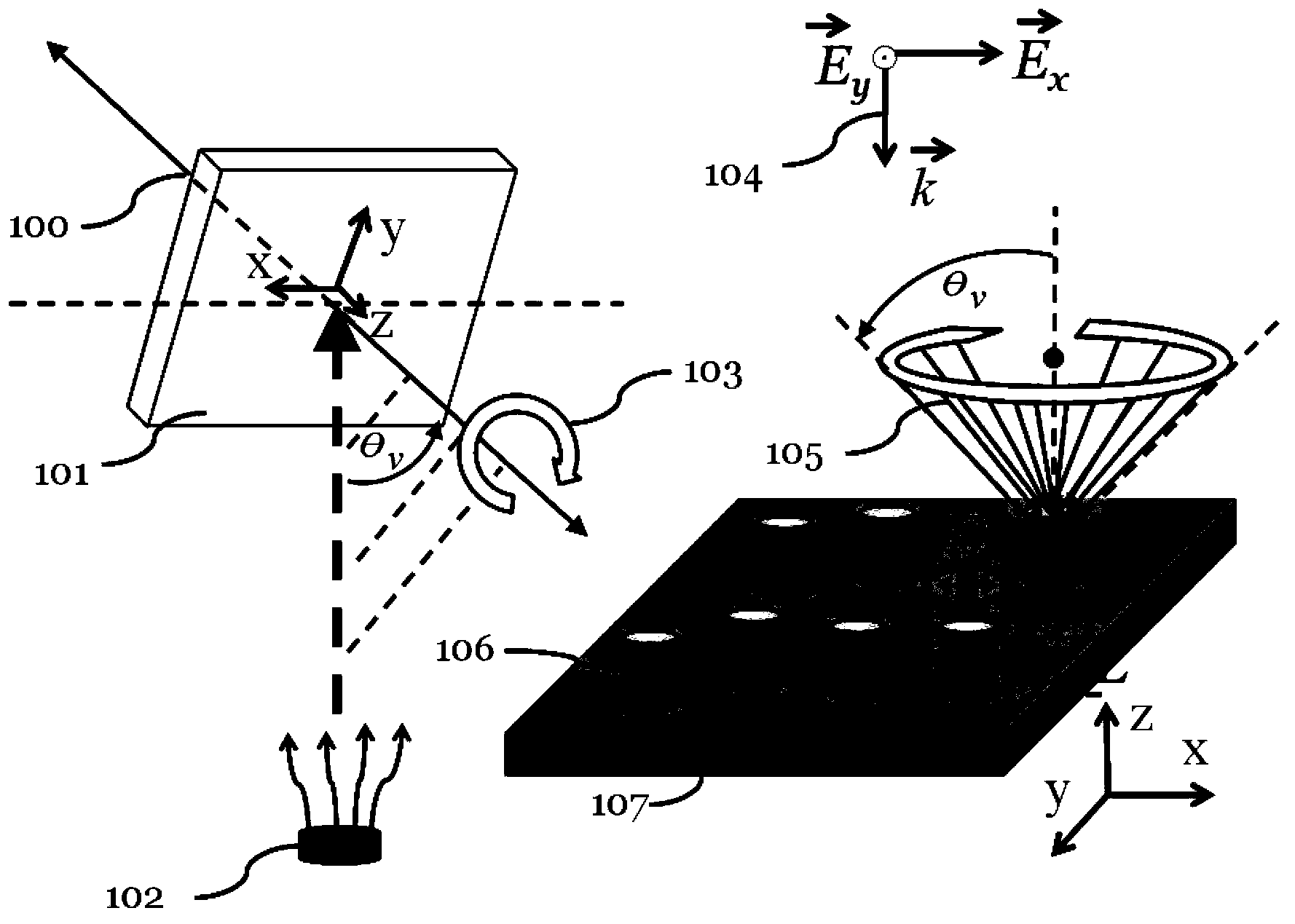Surface enhanced Raman spectroscopy (SERS) sensing substrate and manufacturing method thereof
A surface-enhanced Raman and substrate technology, applied in Raman scattering, material excitation analysis, etc., can solve problems such as expensive and limited development
- Summary
- Abstract
- Description
- Claims
- Application Information
AI Technical Summary
Problems solved by technology
Method used
Image
Examples
Embodiment Construction
[0044] In order to solve the above technical problems, the present invention provides a method for manufacturing a surface-enhanced Raman spectroscopy (SERS) substrate with at least a metal nano-column structure, including: using an oblique angle deposition method with the rotation of the substrate, and fabricating on the substrate The metal nano column structure and / or the dielectric nano column structure, the nano column structure has a configuration, and the nano column structure is approximately parallel to the normal direction of the substrate after the growth is completed.
[0045] In the electron gun cavity system, such as figure 1 As shown, the present invention uses oblique angle deposition (oblique angle deposition) with substrate (self) rotation technology to fabricate a silicon wafer substrate 101 (or 107) or a glass substrate 101 (or 107) A plurality of silver nanopillar structures 106, the diameter of the structure is D, and the height (or thickness) is L.
[0046] Th...
PUM
| Property | Measurement | Unit |
|---|---|---|
| Diameter | aaaaa | aaaaa |
Abstract
Description
Claims
Application Information
 Login to View More
Login to View More - R&D
- Intellectual Property
- Life Sciences
- Materials
- Tech Scout
- Unparalleled Data Quality
- Higher Quality Content
- 60% Fewer Hallucinations
Browse by: Latest US Patents, China's latest patents, Technical Efficacy Thesaurus, Application Domain, Technology Topic, Popular Technical Reports.
© 2025 PatSnap. All rights reserved.Legal|Privacy policy|Modern Slavery Act Transparency Statement|Sitemap|About US| Contact US: help@patsnap.com



